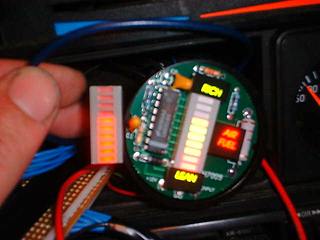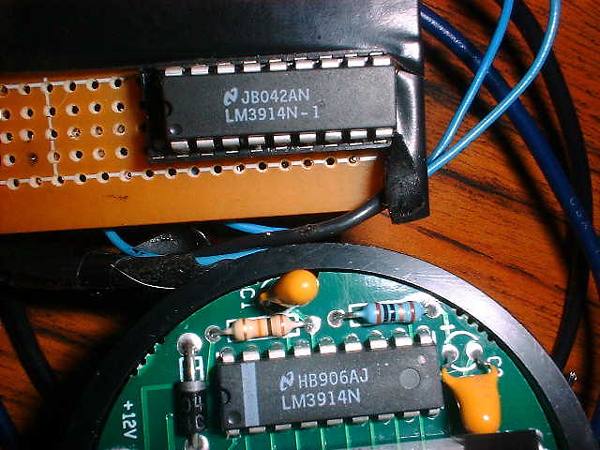The following image is a comparision of the one i will be making (left) compared to a commercial unit (right)

you will have to devise your own way of mounting the graph. The electronic circuits are seperated from the actual graph, joined by some wires. so you can hide away the circuitry and just show the gague, i can calibrate the gage from any voltage below one volt (no lights are on) to 1 volt (all lights are on).
Unfortunatly this will not work with a wide band o2 sensor.
I can make the gagues in eather yellow, green or red bar graphs, and you can select between a bar or dot type graph, (in bar style all the lights below the current reading are turned on, in dot style just the current reading is turned on.
If you would like one the cost will be $30 canadian + shipping
For an extra $5 i will put the electonic compents inside a little plastic case so you dont have to insulate them yourself.
Let me know, if i get enough interest i will make these.
If any admin needs to talk to me about this, please pm me.
Thanks,
Bochek
Interested:
Handle/Case/Color/Voltage Range/Dot or Bar
1) Trevo123 /Y/G/0-1/B
